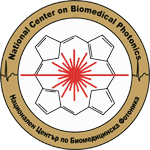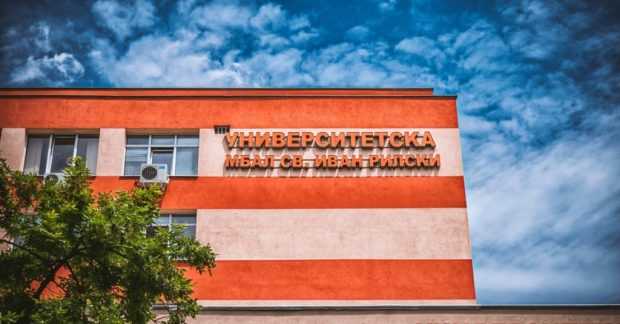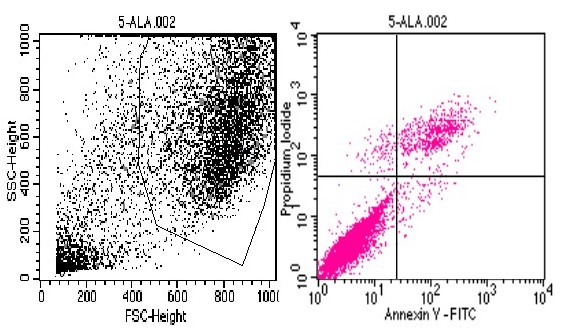Funded by NSF-MES-Bulgaria
- Base organization:
- Medical University – Sofia, Faculty of Medicine –UH “St. Ivan Rilski”
- Partner organizations:
- Institute of Electronics – Bulgarian Academy of Sciences
- Institute of Organic Chemistry with Centre of Phytochemistry – Bulgarian Academy of Sciences
- Research team members:
- Krassimir Minkin, MD, Assoc. prof. PhD UH “St. Ivan Rilski”, MU-Sofia – Coordinator
- Dobroslav Kyurkchiev, MD, Professor, DSc, UH “St. Ivan Rilski”
- Kalina Tumangelova-Yuseir, biologist, PhD, UH “St. Ivan Rilski”
- Emanuil Naydenov, MD,UH “St. Ivan Rilski”
- Kaloyan Gabrovski, MD, UH “St. Ivan Rilski”
- Georgi Vasilev, , MD, full-time Ph.D. student at MU Sofia
- Ekaterina Kurteva, MD, full-time Ph.D. student at MU Sofia
- Petar Karazapryanov, student at MU-Sofia
- Vasil Karakostov, MD, Assoc. prof. PhD UH “St. Ivan Rilski”, Neurosurgery Clinic, MU-Sofia
- Ekaterina Borisova, Assoc. Prof., PhD in Physics
- Alexander Gisbrecht, Assoc. Prof., PhD in Physics
- Tsanislava Genova, Ph.D. student
- Deyan Ivanov, Ph.D. student
- Victoria Mircheva, student, Medical Physics
- Oksana Semychikina-Glushkovskaya, Prof. PhD, Saratov State University, Russian Federation
- Ivan Angelov, Assoc. Prof. Ph.D.
- Vanya Mantareva, Assoc. Prof. of Chemistry
- Melicha Aliosman, assistant, chemist
- Ivelina Eneva, assistant, Ph.D. student
Project summary:
Glioblastoma is the most common and most malignant type of brain tumor. The average survival rates in patients with newly diagnosed glioblastoma is only about 14 months, despite use of aggressive surgery, radiation therapy and chemotherapy. Glioblastoma, unlike other malignant tumors, rarely spreads outside of the brain and the main cause of death is the local intracranial progression. These facts require search and development of new methods for the treatment of glioblastoma. Photodynamic therapy (PDT) has proven its effectiveness in the treatment of neoplasia. The mechanism of action is based on the formation of singlet oxygen resulting from the absorption of light at a specific wavelength from a photosensitizer molecule that is selectively accumulated in the tumor cells.
On the other hand, application of delta-aminolevulinic acid (5-ALA) leads to the selective accumulation of protoporphyrin IX in glioblastoma cells due to their hem metabolism disorders and is used effectively for intraoperative fluorescence staining of the tumor formation and differentiation from normal brain parenchyma. Protoporphyrin IX also has photosensitizing properties, making it suitable for photodynamic therapy.
Cell death (apoptosis) of mesenchymal stem cells isolated and cultivated from Glioblastoma multiforme. Determined through flow cytometry after application of 5-ALA and irradiation with light at 635 nm.
The aim of this project is to investigate the photodynamic properties of protoporphyrin IX and other photosensitizers on stem cell cultures isolated from glioblastoma.
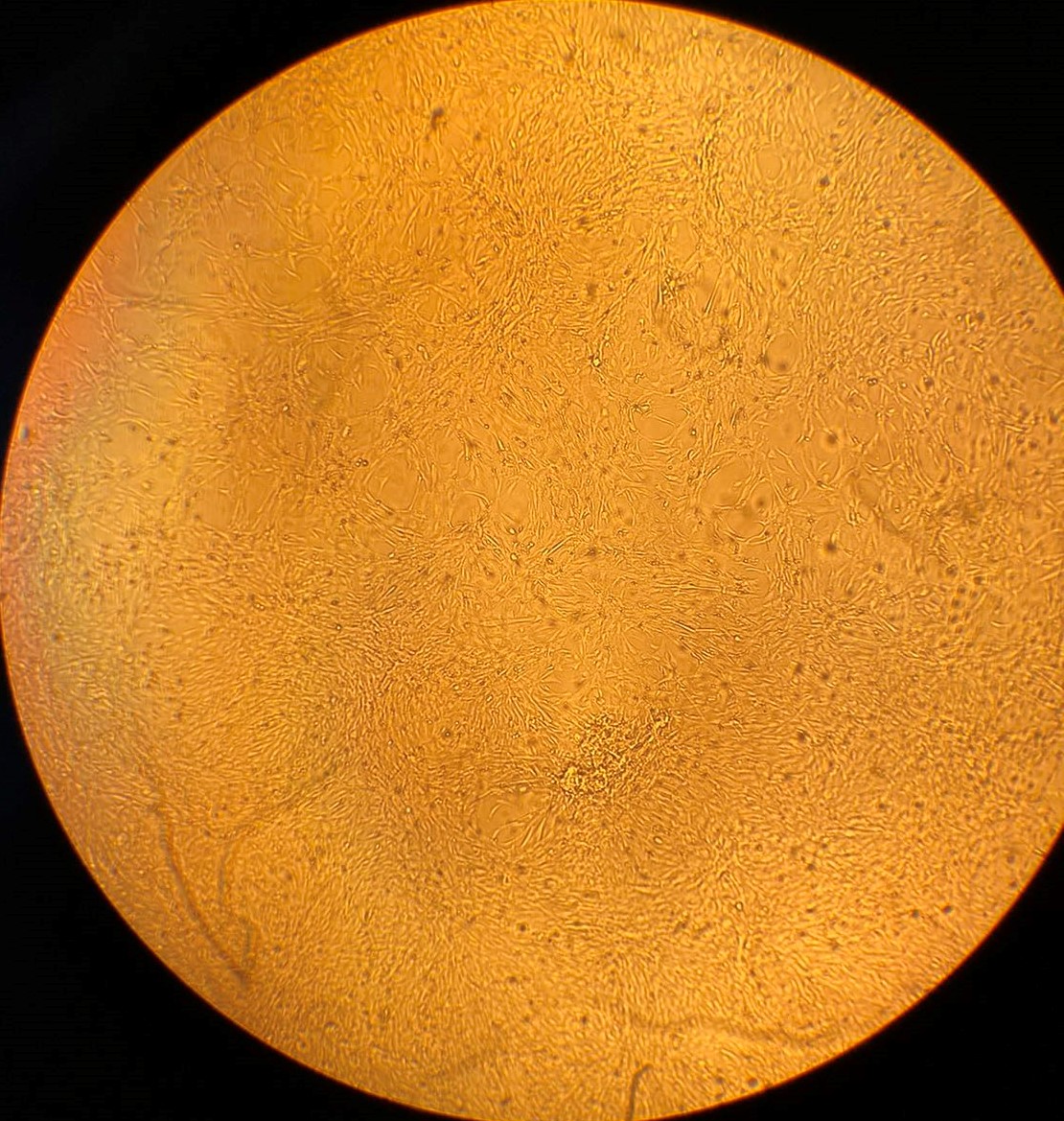
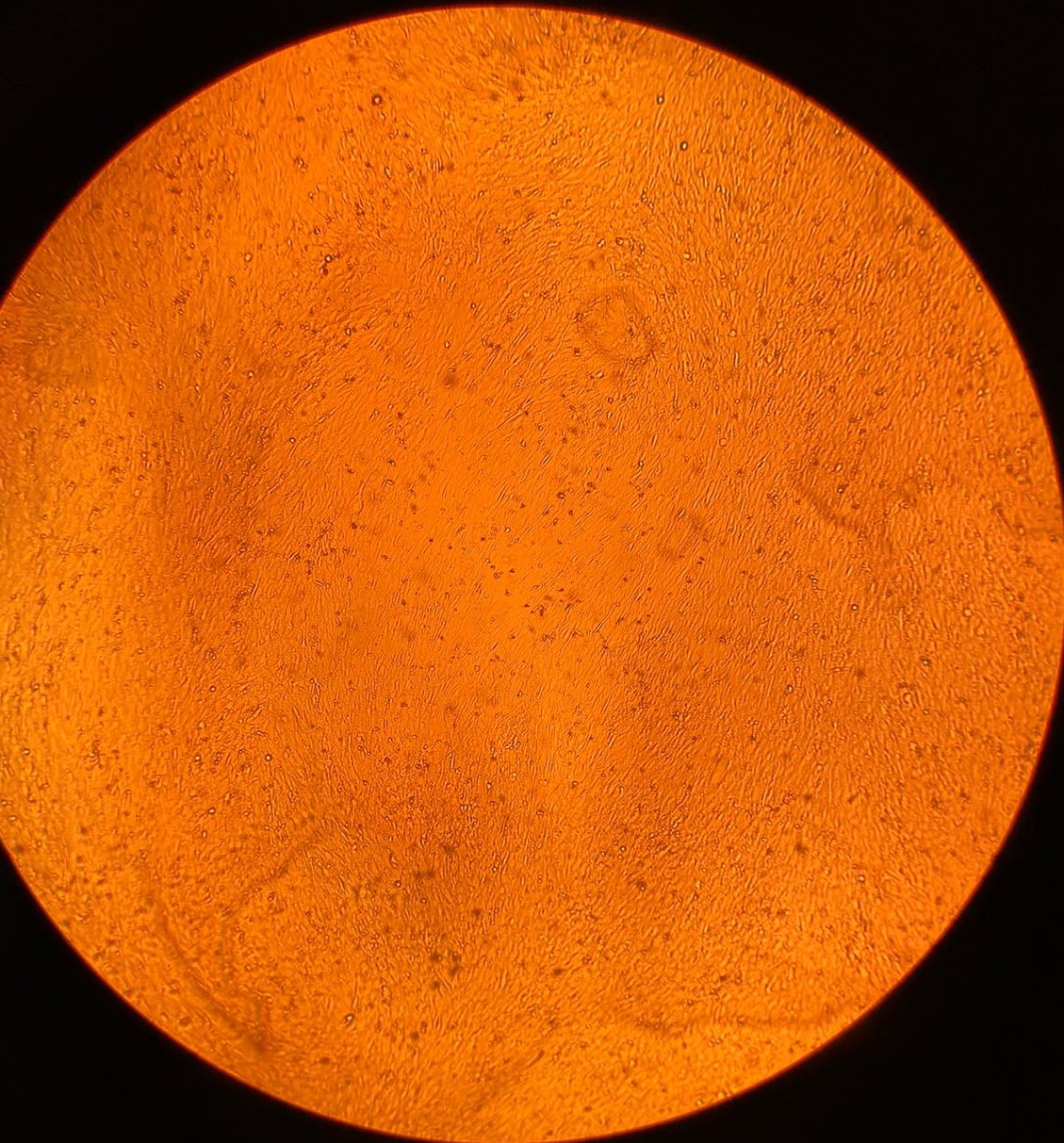
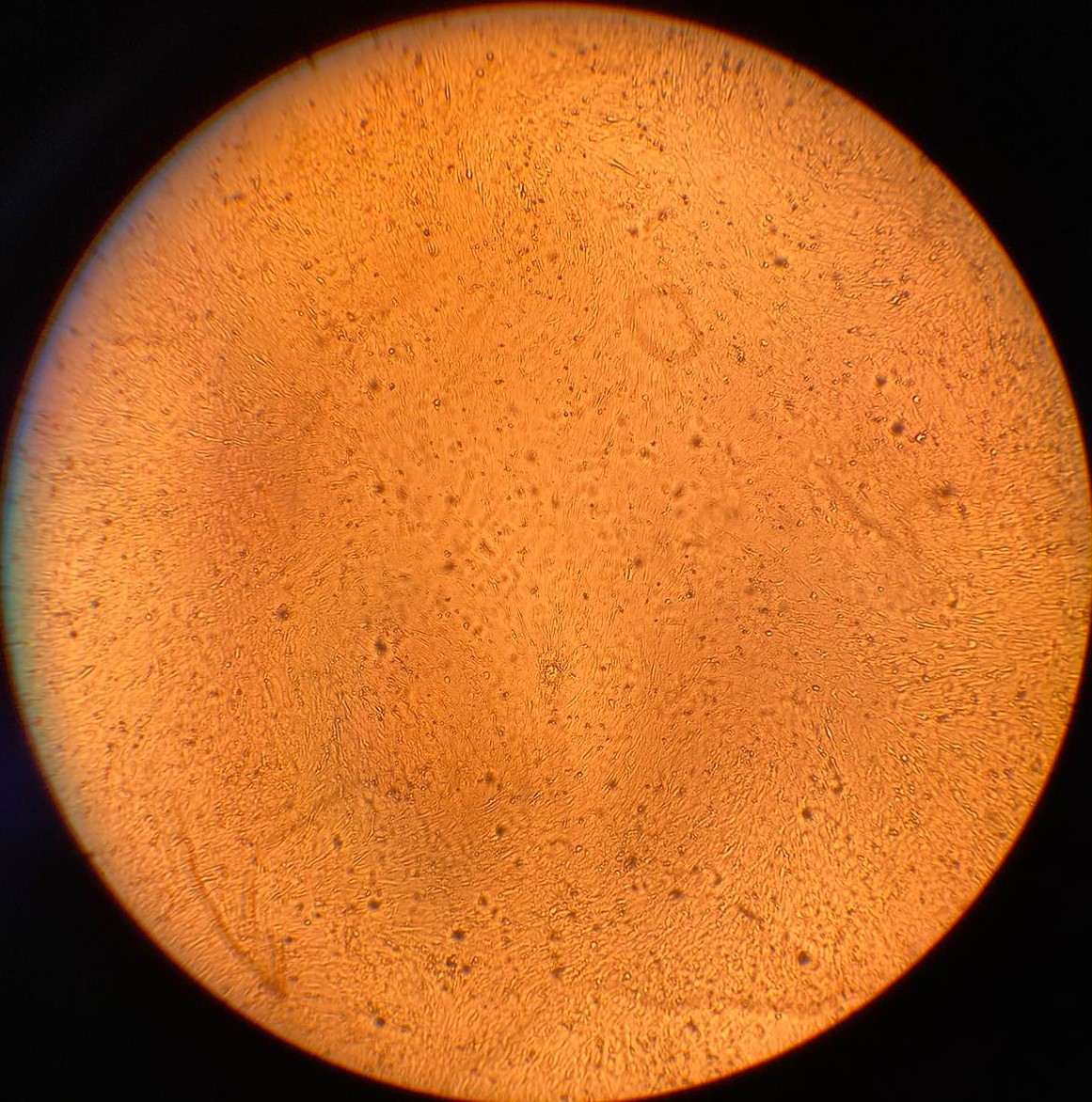
Mesenchymal stem cells isolated and cultivated from glioblastoma multiform.
Several variables, such as histochemical and genetic variants of glioblastoma, various photosensitisers and light-emitting parameters are planned to be studied. We foresee that the results of this “in vitro” project will be used as the basis for a further “in vivo” project on animal models of glioblastoma with applying irradiation using intracranial light sources and for a subsequent transfer of the obtained protocols of photodynamic treatment of glioblastoma lesions in such animal model systems for the needs of human medicine.

Fluorescence spectra of murine brain in control (non-photosensitized) and experimental (photosensitized with 5-ALA /PpIX) groups before and after laser irradiation at 635 nm.
Expected results:
This project has been developed after a thorough analysis of our ideas for developing and improving glioblastoma treatment methods, with the overall goal of improving the effectiveness of therapy, extending life expectancy and improving the quality of life of patients suffering from this disease. It is necessary in the first stage of this global task to analyze and determine the optimal modes of action, to identify the reasons of the different sensitivity of treatment that is prevalent in different patients and to obtain the most effective protocol for photodynamic impact on treated cells. Project ideas and tasks are based on our previous research and analysis of existing constraints of previously developed systems and concepts, as well as analysis and knowledge of the state and current level of research in the field of fluorescence-guided resection of GBM and photodynamic therapy of this type of tumours, as well as of the investigated model cell systems mimicking the tumour.
With the implementation of the project, the following specific results will be achieved:
– Development of a protocol for obtaining mesenchymal stem cells from glioblastoma as model systems for subsequent analysis of various therapeutic factors and procedures;
– Development of protocol for photodynamic treatment of stem cells in vitro using delta aminolevulinic acid as a precursor of protoporphyrin IX as the main photosensitizer;
– Obtaining new substances, knowledge and creation of a database of spectral fluorescence characteristics (excitation, emission, and lifetime) for new synthesis and functionalized phthalocyanines for use in tumour photodynamic therapy;
– Development of a protocol based on the absorption and fluorescence spectroscopy of cell cultures treated with various photosensitizing agents for the purposes of monitoring and control of photodynamic treatment of model cell cultures as well as dosimetry of the photodynamic effect;
– Deepening of research cooperation with leading specialists from the country and abroad in the field of photodiagnosis and photodynamic therapy of tumours of the brain.
The development of a significant scientific product on the project will be ensured by the already accumulated experience of the teams and their managers from the three partner groups as well as by the motivation for the career development of the PhD students and students involved in the project. Mutual scientific and applied interest will allow for continued and sustained cooperation between research teams.
- Borisova E., “Photodiagnosis Of Stress-Induced Gastrointestinal Neoplasia”,
45th International Conference “Current Trends in Cancer Theranostics” 30.06.2019 – 04.07.2019, Trakai, Lithuania (Oral presentations) - Borisova E., Gisbrecht A., Genova Ts., Kyurkchiev D., Tumangelova-Yuseir K., Ivanova-Todorova E., Angelov I., Semyachkina-Glushkovskaya O., Minkin K., Photodynamic treatment of stem cells cultivated from glioblastoma tumour, Saratov Fall Meeting 2019, 23.09.2019 – 27.09.2019, Saratov, Russian Federation (Poster presentations)
- Borisova E., Photodynamic treatment of stem cells cultivated from glioblastoma tumours, International Conference on Photonics Research, 04.11.2019 – 09.11.2019 Antalya, Turkey (Oral presentations);
- Zaharieva L., Borisova E., Kyurkchiev D., Tumangelova-Yuzeir K., Ivanova-Todorova E., Angelov I., Genova Ts., Kolev B., Gisbrecht A., Semyachkina-Glushkovskaya O., Karazapryanov P., Minkin K., Photodiagnostics and photodynamic treatment (PDD and PDT) of stem cells cultivated from human glioblastoma tumours, 21st International Conference and School on Quantum Electronics “Laser Physics and Applications”, 21.09.2020 – 24.09.2020, Sofia, Bulgaria (virtual forum) (Poster presentations);
- Borisova E., Kyurkchiev D., Tumangelova-Yuseir K., Ivanova-Todorova E., Angelov I., Zaharieva L., Karazapryanov P., Minkin K.., 5-ALA/PpIX fluorescence signal of glioblastoma cells in correlation with early and late photodynamic-induced apoptosis, Saratov Fall Meeting-SFM’2020, 28.09.2020 – 02.10.2020 Saratov, Russian Federation (Oral presentations)
- Semyachkina-Glushkovskaya O., Borisova E., Mantareva V., Angelov I., Eneva I., Terskov A., Mamedova A., Shirokov A., Khorovodov A., Klimova M., Agranovich I., Bolkhina I., Lezhnev N., Kurths J. “Photodynamic Opening of the Blood–Brain Barrier Using Di?erent Photosensitizers in Mice”, Applied Sciences, 10, 1, MDPI, 2019, DOI:10.3390/app10010033, 33-45. SJR (Scopus):0.379, JCR-IF (Web of Science):2.217 Q1 (Scopus) Линк
- Zaharieva L., Borisova E., Kyurkchiev D., Tumangelova-Yuzeir K., Ivanova-Todorova E., Angelov I., Genova Ts., Kolev B., Gisbrecht A., Avramov L., Semyachkina-Glushkovskaya O., Karazapryanov P., Minkin K.. Photodiagnostics and Photodynamic Treatment of Stem Cells Cultivated from Human Glioblastoma Tumors. Journal of Physics: Conference Series, приета за печат: 2020, SJR=0.23 Линк
